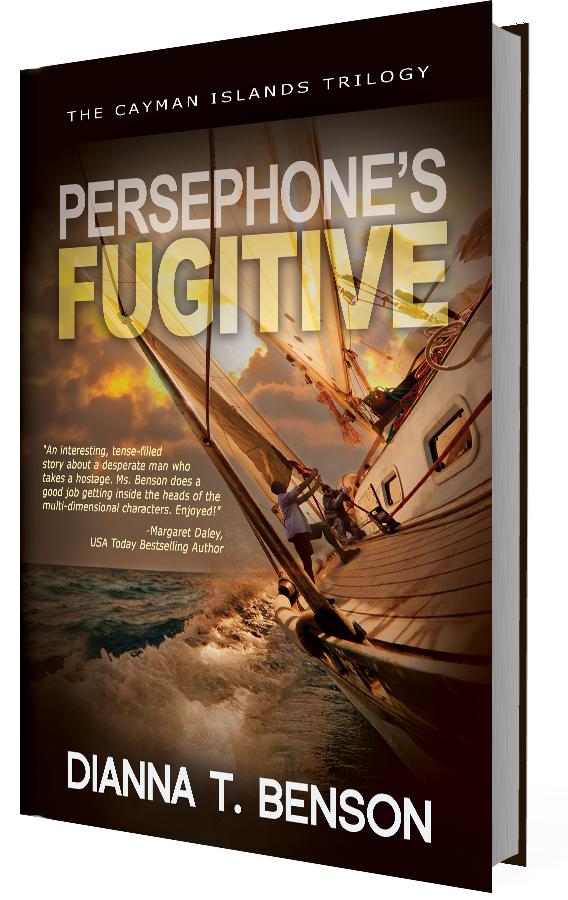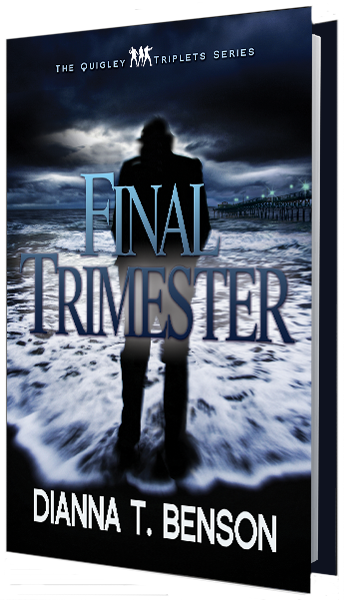Types of EMS Calls
Posted by dtbAdmin on Apr 15, 2011 in Blog, Medical/EMS | 0 comments
It’s tax day! Are you suffering? Feeling the need to call 911? Dianna Benson, Redwood’s resident EMS expert, is back for her monthly post. Today, types of EMS calls… in case you’re feeling the need for a little 911 service. But more importantly, for accurate descriptions in your ms. This should give you lots of ideas. Hopefully, dispatch will be able to provide us with the type of EMS Call we’re responding to, and Calls fall into two categories: 1) Trauma: Injuries caused by trauma – Motor vehicle collisions, falls, bicycle accidents, motorcycle accidents, sporting incidents, gun shot wounds, stab wounds, burns, etc. 2) Medical: MI (myocardial infarction – heart attack), hypoglycemia (low blood sugar), seizure, hypertension (high blood pressure), dyspnea (shortness of breath), abdominal pain, etc. Medical is tricky because, for example, the causes of abdominal pain are numerous, ranging from abdominal aortic rupture to ectopic pregnancy, so it’s our job to place the puzzle pieces together to diagnose the medical condition in order to best treat the patient. On the other hand, trauma is difficult since we may treat multiple severe issues on one patient as well as treat multiple patients with an array of issues in a chaotic situation. Types of Calls: 1) Hemorrhage (bleeding) 2) Shock (hypoperfusion – lack of sufficient blood flow) 3) Fall (any type, from falling 50+ stories to slipping in the shower) 4) Stabbing 5) GSW (gun shot wound) 6) Burn 7) Soft tissue injury 8) Musculoskeletal injury 9) Head injury 10) Spinal injury 11) MVC (motor vehicle collision) 12) MCI (mass/multiple casualty incident) 13) Bicycle, motorcycle or ATV accident 14) Cardiac 15) Cardiac arrest 16) Respiratory distress 17) Apnea (respiratory arrest) 18) Anaphylaxis shock (severe allergic reaction) 19) Unconscious patient (and unknown reason to bystanders on scene) 20) Possible hypoglycemia (low blood sugar on a known diabetic patient) 21) Overdose (alcohol, drugs, and medications) 22) Poisoning 23) Hypotension (low blood pressure) or hypertension (high blood pressure) 24) CVI (cerebral vascular incident – stroke) 25) Seizure 26) Syncope (fainting) 27) Acute abdominal pain 28) Submersion, drowning and diving emergencies 29) Behavior/psychological/mental/AMS (altered mental status) 30) Obstetric and gynecology 31) Hypothermia or hyperthermia 32) Etc. In the times when inaccurate information is given to us by dispatch for various reasons (see my post – EMS and Dispatch), the type of Call dispatched may not be the true situation. For example: 1) Hemorrhage Calls can...
Read MoreEMS and Dispatch
Posted by dtbAdmin on Mar 9, 2011 in Blog, Medical/EMS | 0 comments
Our resident EMS expert Dianna Benson is back discussing EMS and Dispatch for those pre-hospital scenes. Our station buzzer and waist-radios go off, dispatching us to a scene of an incident (if we’re not at our station at that moment, obviously we’d only hear our waist-radios). A split second later, a computerized voice over our station intercom says (for example): EMS 1071. Cardiac arrest at 123 Main Street. At 123 Main Street. TACH Channel 5. The same information is displayed on our radios. EMS 1071 is an ambulance number and the crew currently working the shift on that particular ambulance. Cardiac arrest is the type of EMS Call, but we may not receive this information (see below). The address is repeated once for clarity. TACH channel is the specific radio channel we need to set our radios to for this Call in order to receive any available additional information, as well as be in constant contact with various resources for several reasons – the top two reasons: 1) For our safety, and 2) To request additional resources as needed – PD (police department), LEOS (law enforcement officers), another ambulance, fire department, haz-mat team, etc. When an EMS crew receives a Call to respond to, 911-dispatch is often only able to provide us with little vital information regarding the scene. The one main piece of info we do receive, of course, is the address of the incident location. We may or may not be informed of the type of Call – cardiac arrest, respiratory distress, fall, MVC (motor vehicle collision) allergic reaction, etc., we may only receive the address. En route to the scene, we may receive additional vital pieces of information if the 911-dispatcher was able to obtain details from the 911-Caller. If so, dispatch will inform us: 1) If the patient is conscious or not, 2) If the patient is breathing or not, and 3) If PD or LEOS have been dispatched along with my crew. Any information is helpful for us to prepare for the scene we’re about to encounter, therefore enables us to best treat the patient, protect bystanders and the environment, and maintain our own safety. Unfortunately, the information given can be...
Read MoreTake Me First: Triage in the EMS Setting
Posted by dtbAdmin on Feb 9, 2011 in Blog, Medical/EMS | 0 comments
Dianna Benson is back posting about triage in the EMS setting. Last Wednesday, I covered triage in the hospital setting. Today, will be a great opportunity to test your EMS triage skills in the comments section. I’m taking the test. How about you? Dianna will be checking in to give her expertise. Also, don’t forget, whoever leaves the most comments this months wins a prize! Mass/Multiple Casualty Incident Triage I’m FEMA certified in ICS – the Incident Command System, which is the US National emergency system. I serve in times of crisis in my local community as well as anywhere I’m needed or sent. MCI (Mass or Multiple Casualty Incident) falls under that command system. By definition, a MCI is any event that places excessive demands on personnel and equipment, and involves three or more patients. Like in a Haz-Mat situation, a small town can rapidly become overwhelmed by a MCI. Then again, even in a large metropolitan city, chaos can and does occur if there’s enough conflict – extreme weather, rush-hour traffic, an earthquake that affected most of the city, etc. Some examples of a MCI: Structure fire and/or explosion, MVC (motor vehicle collision), gang-related violence, bus rollover, tornado, flood, public shooting, etc. ICS is also used in preparatory and scene control for large crowd events like: Sporting events, concerts, a visit from the US President, etc. ICS is in place during as well as pre and post these events to handle normal activity and to deal with any emergency crisis if one or more occurs. Numerous emergency agencies are involved in handling a MCI. Together, the ICS allows us all to efficiently and effectively work together. The first EMS personnel to arrive on scene of a MCI becomes the EMS incident commander. That person sets up the following sectors: A) Mobile Command B) Extrication C) Staging D) Supply E) Treatment F) Transportation G) Triage For this post, I’ll discuss triage only. Typically, there are two phases of triage – primary and secondary. For this general explanation, assume I wasn’t the first to arrive on the scene, and when I did arrive, the EMS incident commander assigned me in triage. 1) Primary Triage: In the staging area, I suit-up in my necessary protective gear and grabequipment. I...
Read MoreEMS Treatment of a Minor (1/2)
Posted by dtbAdmin on Jan 23, 2011 in Blog, Medical/EMS | 0 comments
Mart asks: My MC is 16 yrs old. She gets hit by a truck. She has road rash. Right leg turned black and blue. Shin welled up. But other than feeling like she literally was hit by a truck, she is okay….she thinks. What would most likely occur after an incident like this? In short, how can I make it so a 16 yr old girl who has been hit by a car, stalls at home before her Mom takes her to the ER? I hope there is a way. Dianna says: A 16-year-old can accept EMS treatment and transport to a hospital. However, a 16-year-old cannot refuse treatment and/or transport – EMS has a refusal form that requires a signature from the patient, a minimum of age 18, or from a parent or legal guardian of a minor aged patient, 17-years-old or younger. EMS will not leave a patient at the scene until we obtain a signed refusal form (we wait for as long as it takes to obtain that signature). It’s not uncommon for patients to refuse an ambulance transport to avoid additional medical bills and then have someone drive them to the ED. From your scene description, it sounds like the patient was a pedestrian stuck from a truck at low speed, propelling her body in the air slightly; her leg skidded on the road, stopping her. A pedestrian struck by a moving vehicle is a serious mechanism of injury thus a high priority trauma. EMS will encourage both treatment and transport by explaining to your patient she may have internal injuries. I actually say to patients, “I don’t have x-ray vision or CT scan capabilities inside my ambulance, so I’m unable to verify if you’ve sustained internal injuries or not.” If transport is still declined, I obtain a signature of refusal from a parent or legal guardian (the uncle wouldn’t be enough). The way around this legal issue is for the MC to call her mom and EMS waits for her to arrive on scene. Was the truck driver at fault for hitting the MC? If the driver is legally at fault, then most patients tend to accept EMS treatment...
Read MoreDisaster Status Part 3/3
Posted by dtbAdmin on Jan 7, 2011 in Blog, Medical/EMS | 0 comments
Another Real-Life Incident I was on-shift the night an industrial hazardous waste plant burst into flames. I obviously have all the inside information, but it won’t be released to the public, so I’m sorry to say I can’t share most of it with you. What I can say – inside the facility, stored toxic material ignited. The fire quickly grew to a plume of smoke then the entire facility erupted into a fireball with several rapid fire explosions. This swift and extreme domino of events occurred simply because the burning toxic chemicals were stored right next to oxygen cylinders, and oxygen feeds fire. You guessed it, properly stored O2 is essential. The reverse 911 system was activated – recorded messages called all nearby residents, warning them to evacuate. View the photos included here – it was an intense explosion and the burning toxic chemicals created a massive haz-mat situation. The chemicals involved in that explosion react negatively when mixed with water, so we were forced to allow the fire to burn itself out. Two days post the onset of the incident, a foam application extinguished the remaining flames. Even though this makes for boring fiction, emergency agencies that night proved pre-planning and inter-agency training and execution results in excellent emergency incident response outcome. My crew along with many other emergency crews, successfully worked the potentially deadly incident – no loss of life and only minor exposure issues occurred. But think of the endless possible dramas that could’ve happened. Thank you in advance for reading and for your participation and comments. If you have any questions, please do not hesitate to ask. Photos are courtesy of Apex Fire...
Read More



